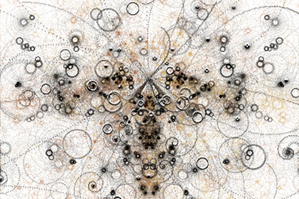Northeastern at Fermilab

If you happened to find yourself on Fermilab’s homepage today, you would find there a handy link to today’s “University Profile,” which highlights Northeastern.
One of 118 universities that rely on Fermilab to perform research, Northeastern’s research team focuses on the detection of two types of sub-atomic particle: the muon and the photon.
Fermilab was home to the Tevatron, a four-mile long particle collider that slammed protons and antiprotons into head-on collisions close to the speed of light. Having achieved the reaches of its capabilities, Tevatron was shut down a year ago. Now, the Northeastern team at Fermilab has shifted most of its work over to the Large Hadron Collider in Switzerland. Running more than four times the length of the Tevatron, the LHC is able to detect particles of much higher energy.
Two detectors sit along its circumference and one — the Compact Muon Solenoid detector — is of particular interest to Northeastern’s team. Weighing in at 12,000 tons and standing more than four stories high, CMS has a few different components. The parts of the detector (which is set up like an onion with several layers) that Northeastern works on include the outermost detector, which hunts down muons, and the electromagnetic calorimeter nearer to the center.
Muons and photons are two types of subatomic particle that have been measured and identified. Several others (like the Higgs boson you may have heard about recently) remain somewhat elusive. The standard model of physics, which cannot account for some things we observe in the universe (like dark energy), may be at a crossroads if previously unidentified particles show their faces at the LHC.
Northeastern’s team uses CMS to look at all the different particles that splinter out after a proton collision. When they find signatures of previously unidentified particles, they put ’em in the back pocket for further investigation. These could be evidence of something completely new: something that can only be explained with a new model of physics.






